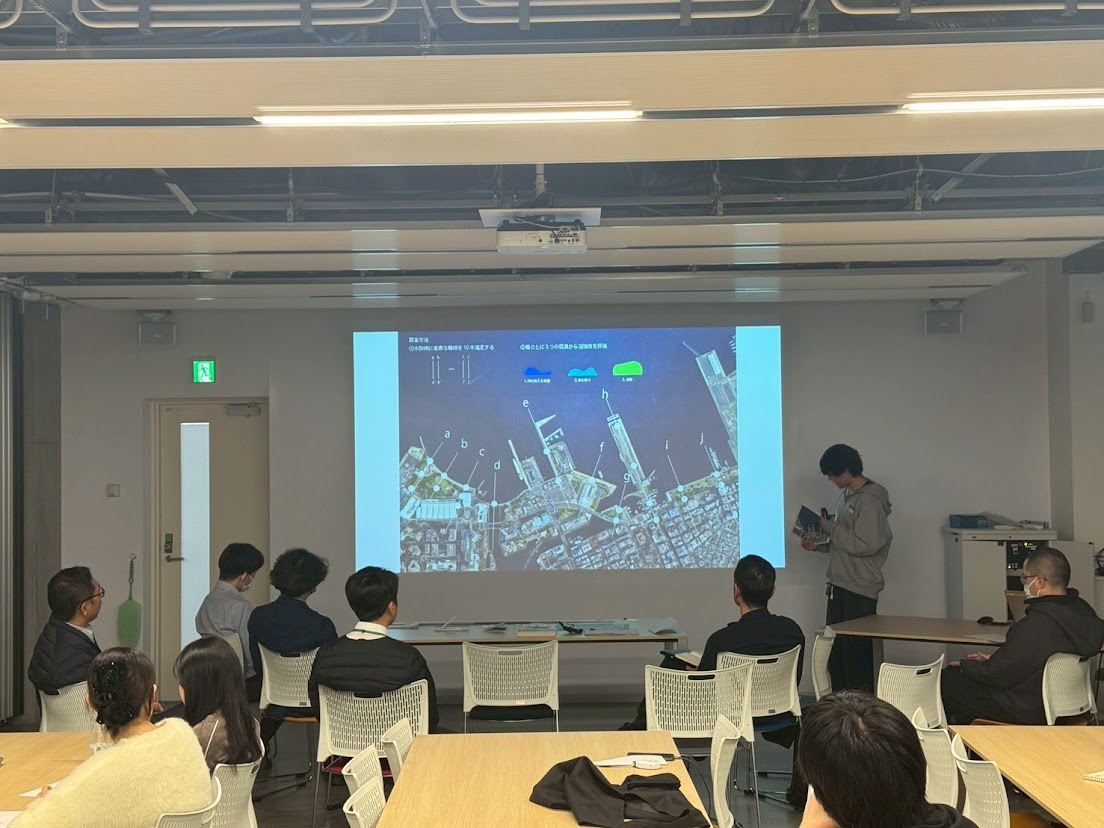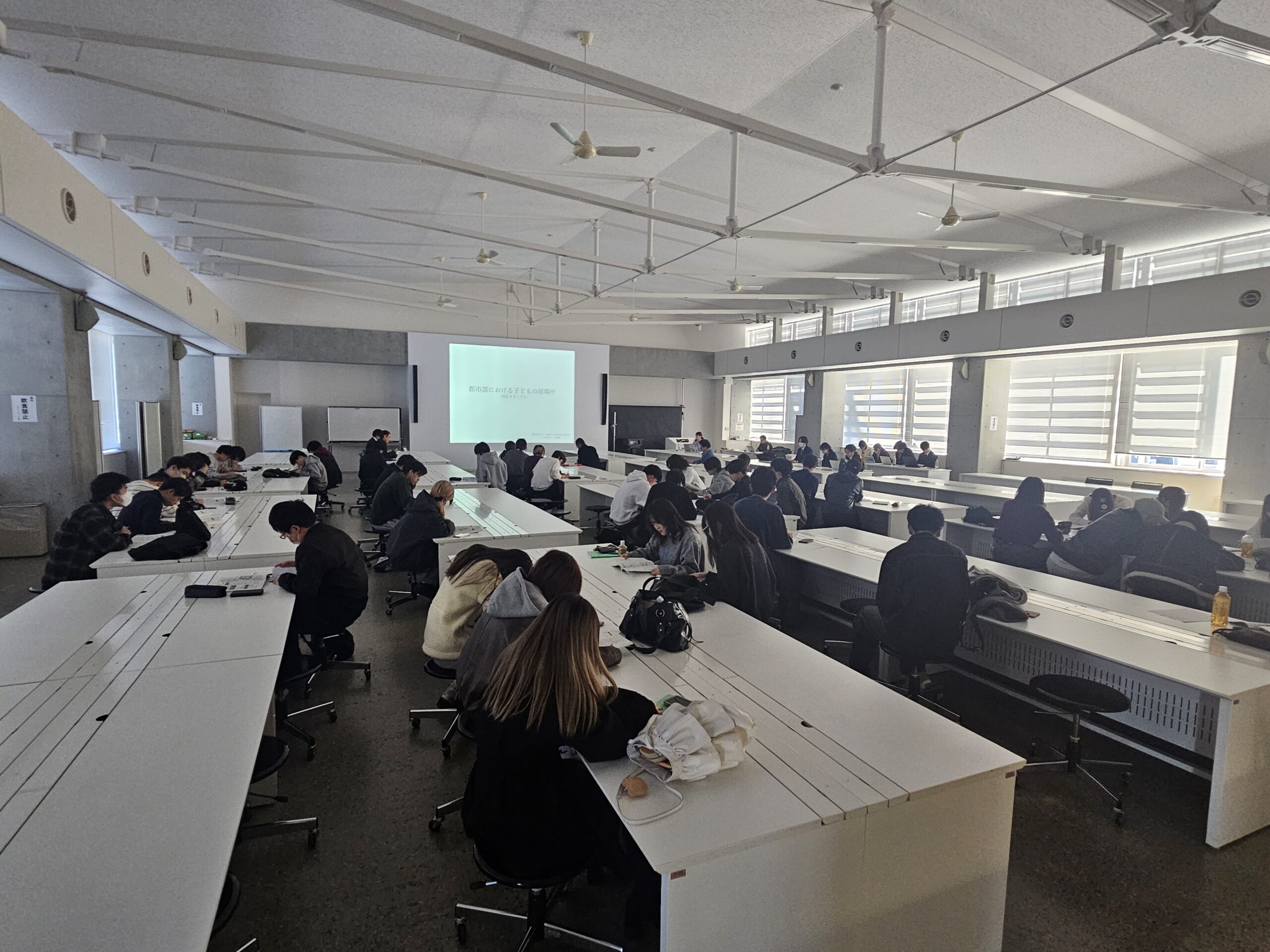[理工学部、建築・環境学部教養学会ミニ講演会] (第70回理科系学生のための公開英語講演会)
War of Currents:
DC vs. AC; Edison vs. Tesla; or GE vs. WEC
電流戦争
講師:理工学部、電気・電子コース
植原 弘明 先生

On November 14th, 2024, a regular session of the English Lecture Meeting for Science Major Students was held under the sponsorship of the Academic Society of Faculty of Liberal Arts, inviting Doctor Hiroaki Uehara at the Department of Science and Technology to give a lecture to the audience of science major students. It was the 9th lecture for this event given by the lecturer with the above title. Professor Uehara is a leading researcher and an expert in the field of science known as electrical engineering. The main theme of this lecture was the so-called “War of Currents,” a fierce battle that occurred in the late 19th century in America over the patents for a viable system for providing electricity between Thomas Edison and Nikola Tesla: The former is an American inventor and businessman, who invented innumerable devices such as the electric light bulb, the phonograph, the motion picture, or the sound recording device; the latter is a Serbian-American inventor and mechanical engineer known for inventions of the Tesla coil or for designing alternating current electricity supply system.
In the introductory portion of this lecture, three preliminary facts for understanding this lecture were clarified. First, each of the two currents, the direct current and the alternating current, has its own properties, as represented by the fact that the direct current (DC) takes the form of a sine wave, while the alternating current (AC) a flat line. Secondly, the electricity that TEPCO (Tokyo Electric Power Company) supplies to our households is that with AC voltage. Finally, the War of Currents was the antagonism between Thomas Edison, who advocated DC transmission and George Westinghouse and Nicola Tesla, who tried to promote the system of AC transmission.

As main topics of this lecture, Dr. Uehara talked in detail about (i) two different frequencies of the AC current, i.e. 60Hz in Western Japan and 50 Hz in Eastern Japan, which have been retained since the dawn of the transmission system of electricity in Japan, (ii) High Voltage Direct Current (HVDC) transmission lines in Europe, (iii) major companies and their shares in the world market of HVDC and HVAC, (iv) portraits of Thomas Edison and Nikola Tesla, and (v) DC products and AC products.
The lecturer summarized the result of War of Currents with the following comments: “In the wake of War of Currents, N. Tesla defeated T. Edison, and General Electric Company, of which T. Edison was the founder, had to change its transmission from the DC system to the AC system. Quite ironically, however, Westinghouse Electric Corporation, which once had two gifted engineers William Stanley and Nikola Tesla at the period of its foundation, currently no longer exists in the industry of electric transmission. On the other hand, General Electric still reigns over this industry as the number one electric company in the world. Besides, the brand name of Westinghouse Electric Company barely remains in the nuclear division of Toshiba Company, a Japanese electric company. A more significant fact in recent development of systems for transmitting electricity is that recently, the importance of DC transmission system, specifically, that of HVDC- (High Voltage Direct Current) transmission system, has been reevaluated more and more due to its great economic benefits. What an unexpected plot twist it is!”
Questions were raised by the audience following the main session. Dr. Uehara gave detailed answers to all the questions represented by the following:
Q. As I understand, currently the high-voltage direct current transmission systemis widely used for transmitting large amounts of electricity. However, the bullet train (Shinkansen) operates not on the DC current but on the AC current, which seems to be another case of a large amount of electricity transmitted over a long distance. If so, are both DC and AC transmission systems equally suitable for the purpose of long-distance high-capacity power transmission? Or is either of the two systems better suited for this application?
A. In the wake of the War of Currents, the AC transmission system has all but obliterated the DC transmission system in the United States; accordingly, the former system was imported to Japan in the early Meiji era and has been established nationwide since. However, in recent years there is a strong tendency of shift toward DC transmission system because it is more cost-effective than the AC system, requiring less peripheral equipment like transformers in substations. This trend is currently observed worldwide especially in such countries as China, the USA, and the countries in EU. In contrast in Japan, the AC transmission system has been established so firmly and broadly that we are currently having a hard time extending the DC transmission system more widely as we should.







